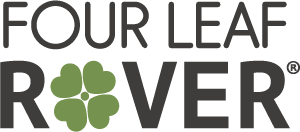Flea Bites On Dogs

Fleas are a common problem for dogs and their owners. These tiny, blood-sucking parasites can make your pet miserable, causing constant scratching, hair loss, and even skin infections.
The worst part is that fleas can jump from one pet to another … or even onto your clothing, carpeting, and furniture, infesting your entire household! Plus, fleas can be challenging to get rid of once they're established.
So, prevention is the best strategy. How to prevent flea bites on dogs? Here are some easy recipes for DIY natural flea prevention.
But what can you do if you already notice your dog has flea bites? First, what do flea bites on dogs look like?
What Flea Bites Look Like On Dogs
Flea bites on dogs typically appear as small, red bumps on the skin, often surrounded by a reddish halo.
The bites are usually found in areas where the fur is thinner. So if you’re scanning your dog to see if he has bites, it’s best to look in areas with less hair like the abdomen, groin, and armpits. Bites will be easiest to spot in those places … but unfortunately they can occur anywhere on the body.
You might also notice that your dog has clusters of bites, as fleas tend to feed in groups.
Other symptoms of flea bites on dogs include the presence of flea dirt (a mix of blood meal and flea feces), which will look like tiny black specks. Kind of gross, I know … but it’s another helpful giveaway if you’re looking for signs of a flea infestation on your dog.
Flea Bite Scabs On Dogs
If your dog doesn’t have any of the signs or symptoms of flea bites above, but is still scratching or biting more than usual, you may want to check him for scabs.
These scabs can be small and localized or cover larger areas if your dog has been aggressively scratching. If you find these scabs, it’s likely your dog has fleas.
The scabs can also be uncomfortable for your dog and may even lead to further skin issues if not addressed. So you’ll need to treat the underlying flea infestation quickly to prevent more bites and stop the itching that leads to scab formation.
How To Treat Flea Bites On Dogs
So … how do you treat flea bites on a dog?
Well, there’s good news and bad news. The good news is that treating your dog for fleas is relatively simple. Unfortunately, it’s treating and cleaning your home that’s the tricky part.
Let’s take a closer look at how to treat flea bites on dogs, and you’ll see what I mean:
1. Get Rid Of Dog Fleas Naturally
The first step in treating flea bites on dogs is to eliminate the fleas themselves.
These products can help remove fleas from your dog's coat and provide temporary relief from itching. To avoid harmful chemicals, use an all-natural organic shampoo, or make your own shampoo or spray instead.
Here’s how:
- Add 3-6 drops total of some of these safe essential oils to a bottle of unscented castile soap:
- Lemon
- Lavender
- Eucalyptus (radiata)
- Atlantica cedar
- Palmarosa
- Clary sage
- Cedar (atlantica)
- Use this when you give your dog his regular bath. Let the soap sit on your dog for a few minutes before rinsing.
- Apple Cider Vinegar Rinse: After the soap bath, use an apple cider vinegar (ACV) rinse consisting of 1 part organic ACV to 10 parts water. This rinse can help repel fleas and soothe your dog's skin.
RELATED: How to get rid of fleas naturally …
2. Treat Your Home For Fleas
Now comes the tricky part. You need to thoroughly clean your home, including vacuuming and washing pet bedding, to remove fleas and their eggs.
Fleas can spread easily from your dog's fur to clothing, bedding, furniture, and more. So if your dog had a case of fleas, it’s likely they’ve already spread anywhere he’s been in your home. If you have other pets, check them for fleas too. Chances are, they have them too.
To effectively eliminate fleas, follow this weekly regimen until the infestation is under control. It's essential to treat all your furry pets, as fleas can easily transfer between animals.
- Bathe Your Dog: As described above, start with a thorough bath using a natural shampoo or citrus-based castile soap. Do this for any of your pets who have fleas.
- Flea Comb Grooming: Brush your dog and other pets from head to tail with a flea comb to remove any remaining fleas and flea dirt.
- Clean Your Dog’s Bedding: Launder all your pets' bedding in hot water with an unscented detergent. If your dog shares your bed, wash your bedding as well.
- Vacuum Thoroughly: Vacuum your entire home, focusing on areas where your dog spends the most time and cracks between floorboards where fleas might hide.
- Use Diatomaceous Earth: Lightly sprinkle food-grade diatomaceous earth (DE) on rugs and carpets. Let it sit for several hours to kill fleas, then vacuum thoroughly to remove dead fleas and DE residue.
Be persistent in repeating this process, as it may take a few months to completely break the flea life cycle. Consistency is key to eradicate all life stages of fleas, including larvae, eggs, and adults. Don't give up the fight!
If you’ve come this far, it’s also worth bulletproofing your yard to get rid of fleas too. It’s the best way to prevent them in the future!
RELATED: How to kill fleas …
How To Soothe Flea Bites On My Dog
You may find that you’ve treated your dog for fleas, but he’s still coping with the itching and discomfort associated with those pesky flea bites.
Here’s what you can do to soothe flea bites on a dog:
- Use a Flea Comb: Regularly comb your dog with a fine-toothed flea comb to remove fleas and flea dirt. This will ensure more fleas don’t crop up.
- Apply Aloe Vera Gel: Aloe vera has natural soothing properties that can help relieve itching and inflammation.
- Oatmeal Baths: Oatmeal has anti-inflammatory properties and can help soothe itchy skin. Add colloidal oatmeal to your dog's bathwater or use an oatmeal-based shampoo.
Allergic Reaction To Flea Bites On Dogs
Some dogs may also be allergic to flea saliva, leading to a condition known as flea allergy dermatitis (FAD). Symptoms of FAD include intense itching, redness, hair loss, and skin inflammation. Basically, all the typical flea symptoms, but with more severe intensity.
Dogs with FAD often scratch or bite at the affected areas, making the condition worse. If your dog shows signs of FAD, here are some natural treatments that can help soothe the problem.
Apple cider vinegar (ACV): Dilute ACV 50/50 in a spray bottle and spritz your dog daily. Make sure you get the spray on the skin in the affected area. You can also give ACV internally by adding a splash to your dog’s food or water.
Topical soothers: these can relieve itching and discomfort as well as help heal FAD.
- Pure aloe vera gel can soothe your dog’s skin. Apply daily to affected areas.
- Castor oil can help get rid of FAD. Massage castor oil into the skin wherever your dog has FAD.
- Colostrum paste: use powdered bovine colostrum mixed with water to make a paste. Spread on your dog’s skin in the affected areas and let it dry. Sponge off before replying.
If you do need to talk to your vet about FAD, it’s best to work with a holistic vet who’ll use natural remedies. Conventional treatments often include chemical pesticides and even steroids, which can be harmful in themselves.
Infected Flea Bites On Dogs
One final caution: flea bites can sometimes get infected. This is typically due to excessive scratching or biting at the flea bites, which is why it’s so important to treat flea bites on dogs as soon as possible.
An infected flea bite may become swollen, red, and oozing pus. Your dog might also develop a fever or appear lethargic. If you notice these symptoms and suspect an infection, it's best to consult your holistic vet.
Find us in a store near you
Never miss out
Need help? Chat with us





